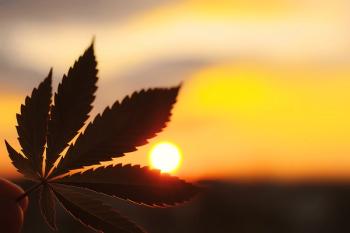
One important element of creating the ideal growing environment for cannabis is often overlooked: air quality. Here, we look at why this is important as well as best practices for mitigating poor air quality.
Addressing the Environmental Impact of Cannabis Cultivation: A Focus on Sustainable Practices
Landowners in Oregon are Now Responsible for Cleanup of Illegal Growing Operations

One important element of creating the ideal growing environment for cannabis is often overlooked: air quality. Here, we look at why this is important as well as best practices for mitigating poor air quality.

This column expresses how cannabis facilities that invest in RCx projects can enhance equipment reliability and worker safety, improve conditions for plant growth and development, increase canopy yields, and reduce maintenance costs.

The field of cannabis horticulture is ever-evolving and offers many opportunities for innovation and experimentation. In this interview, Jessica Lubell-Brand, PhD, professor of horticulture at the University of Connecticut with the Department of Plant Science and Landscape Architecture provides insights into the findings of her laboratory’s recent studies of the “retipping” method of propagating cannabis. She also shares details on her current research with cannabis breeding techniques and how studies like these can benefit the future of cannabis growing.

A look at what epigenetics means, how other plant industries have used or studied them, and how that can be applied to cannabis to improve yields, plant genetics, and solve plant illness.

Here the authors present findings from their study involving six different nutrient treatments applied during the cloning cycle for approximately 500 plants. This paper focuses on the observed benefits in this study involving the use of an amino acid and salt solution using food-grade precursors.

Casey Houweling, the inventor of the semi-closed greenhouse, explains how this greenhouse concept came about, the challenges he’s had developing it, and the potential it holds for the future of the cannabis industry.

Here, we take a look at the top issues related to cannabis cultivation: what top environmental problems still face the cannabis industry, how to reduce emissions in grow facilities, the different effects of various strains on carbon emissions, and how the government is finally helping the industry do a deeper dive into understanding these issues.

Experts within the global cannabis and hemp industries discuss the importance of testing and regulations and sustainable measures that can reduce the sector’s environmental impact.

Learn how having a firm understanding of how you plan to use your facility, what power options are available, and strong partners can guide you to the best solution which is critical to your bottom line.

When it comes to cannabis cultivation, growers have their own methods on how to get the best products from their plants. Through using different soils, irrigation practices, lighting, and other approaches, each item plays an important role in how the plant matures. In this interview, David Cohen, CEO of Fluence, discusses the rise in LED lighting methods and how it can be the best tool for the industry.

How can we address the pest problems created in commercial cannabis cultivation facilities when environmental control systems are improperly designed or implemented?

The choice of growing media can contribute to precision, consistency, and repeatability from plant to plant and harvest to harvest. Here, we consider five factors that should be evaluated to help make the best choice of growing media.

Learn about the diverse kinds of support cannabis growers can get from utilities and efficiency programs for efficient lighting, heating, ventilation, and air conditioning (HVAC), and controls approaches.

This article outlines why multiple testing modes are important, what to look for in third party test providers, and how a cultivator can evaluate these potential providers both at the outset and in an ongoing manner for accuracy and reliability.

In this piece, we touch on the benefits and challenges associated with autoflowering genetics, and provide justification for why these unique varietals may be the catalyst for making cannabis medicine more accessible and approachable for the general population.

Here, we explain how plant-growth parameters interact with carbon dioxide content in grow room air and how cultivators can best apply this knowledge to their commercial cannabis production facilities or research programs.

Learn how to bring efficiency concepts together to create circular cannabis systems.

A look at what effects water and air movement in plants.

The data presented here document the phytochemical composition of a large dataset of Group III cannabis cultivars and allow for the identification of distinct sub-classes.

Better seed genetics, power-free tunable lighting, and other new scientific discoveries are making headway in what has become an ag-tech leading industry.

Learn about the value of monitoring environmental conditions, how software platforms can analyze data and offer insights, and the ways growers can use data to optimize plant health and vitality.

Part III of this series explores the impact of light spectrum on plant growth and the equipment needed for indoor cultivation.

Learn about the four major steps of integrated pest management (IPM) programs: setting action thresholds; monitoring and identification, prevention, and control; the various control methodologies; and how climate control systems both enable indoor cannabis cultivation and can manage pests like mold and mildew.

Isolated CBD, full-spectrum oil, and even smokable hemp are all being diluted down by a draconian regulatory framework that needs to be changed to facilitate growth, innovation, and prosperity throughout the industry.

This article outlines types of cooling equipment that contribute to sustainability and energy-efficiency; how to develop a customized cooling strategy that meets growers’ sustainability goals; and steps growers can take to simultaneously improve energy efficiency and operating costs.